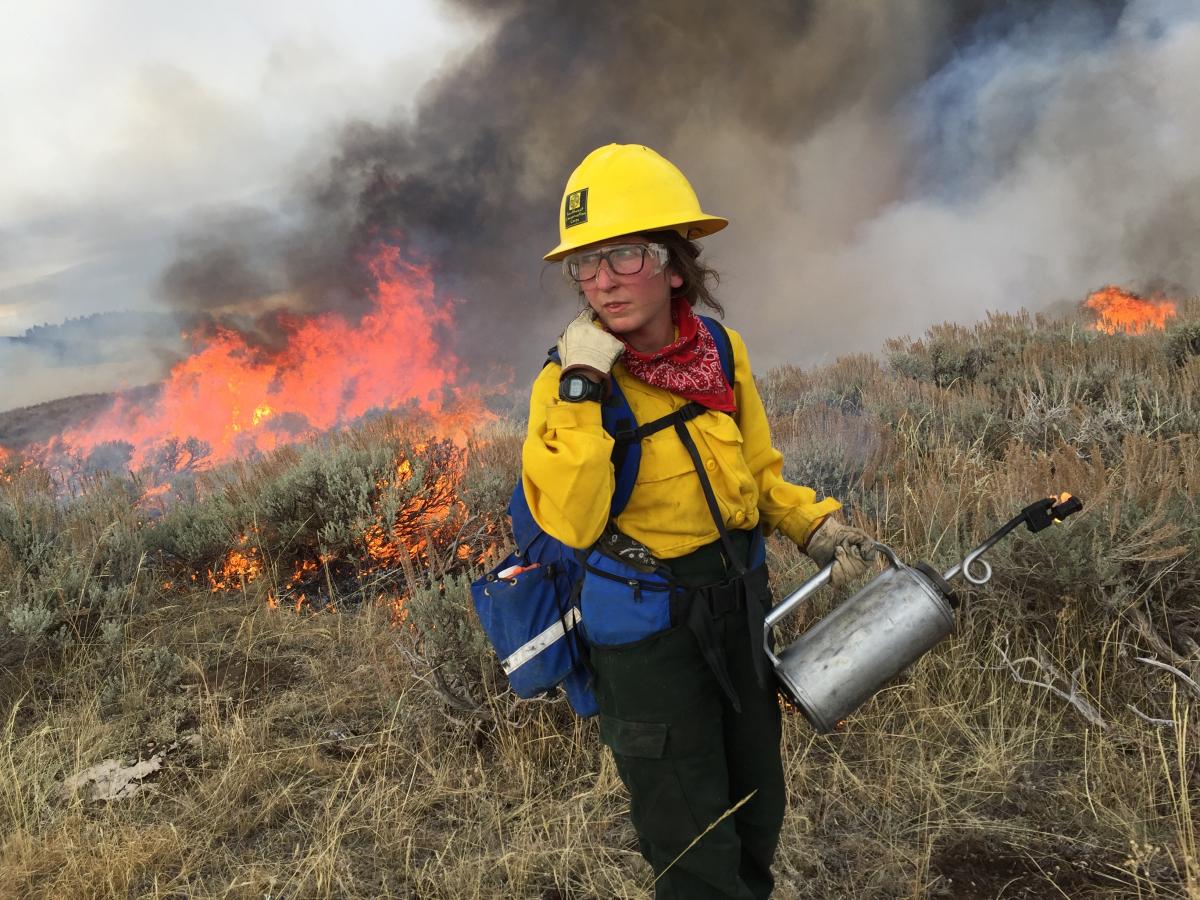

At The Corps Network’s annual National Conference in Washington, DC, we celebrate the important service Corps provide to communities and young people across the country by honoring Corps who have taken on especially noteworthy endeavors within the past year. Projects of the Year are innovative and show a Corps’ ability to work with partner organizations to give Corpsmembers a positive experience and provide the community with meaningful improvements. Learn more.
The Wyoming Women’s Fire Corps (WWFC) is a pilot program that ran August through early November of 2017. Southwest Conservation Corps (SCC), Montana Conservation Corps (MCC) and the Bureau of Land Management (BLM) joined together in this collaborative effort.
SCC and MCC each contributed a crew of six female Corpsmembers and two female Crew Leaders to work with the BLM in Wyoming. The goal was to give these 16 women the confidence, technical skills, and leadership abilities to pursue careers in wildland firefighting. The women completed training and were certified in S130/190 wildland fire fighting and S212 saw operation. The scope of work for the program included fire mitigation and prescribed burns, as well as various chainsaw projects in locations throughout Wyoming. Additionally, both WWFC crews had the opportunity to gain valuable hands-on experience while dispatched on a 14-day assignment to support the massive firefighting efforts in California.
The WWFC is a perfect example of innovation in the Corps Movement. It is a unique opportunity to develop collaborative solutions to several needs. First, this program helps address the huge gender disparity in wildland firefighting. Only 11 percent of permanent wildland firefighting jobs in the U.S. Forest Service are held by women. BLM faces similar statistics.
Second, the WWFC plays a role in addressing resource management concerns. Wyoming has large tracts of land that are potential habitat for the endangered sage grouse, but these areas need to be restored through the removal of encroaching conifers. An effort of this kind requires chainsaw work with a hand crew; perfect saw and physical training for a future wildland firefighter.
The WWFC is potentially the first all-women’s fire crew within the Conservation Corps movement. Additionally, this was the first time either SCC or MCC operated an all-female crew with a set purpose. The uniqueness of this program helped bring in far more applicants than anticipated; within just a two-week window, both Corps received three applicants for every slot.
The first WWFC cohort just closed their season. They report having had an incredible, life-changing experience. Each Corpsmember was an AmeriCorps member, earning a living allowance and finishing with a Segal Education Award. With only one exception, all SCC and MCC members are interested in applying for fire jobs next season; a testament to the empowering nature of this program.
At this point, it’s too early for SCC and MCC to report on how many WWFC participants became employed in wildland firefighting. However, they have already seen other positive effects of the program; SCC has been contacted by BLM and other organizations that are interested in hiring the Corpsmembers and learning more about replicating the initiative in other parts of the country. BLM and both Corps have deemed the WWFC highly successful and are working to repeat the program in 2019.
In the months to come, the two Corps will team-up to develop solutions for challenges discovered in the first year of operation. One of the key factors in the success of this pilot was the critical collaborative effort from staff at SCC, MCC, and the BLM. Several large conference calls took place to establish expectations, logistics and needs of all parties involved.
Both SCC and MCC have been strengthened in many ways because of the WWFC. Each Corps has developed relationships with communities in Wyoming and with the BLM of Wyoming. Additionally, their crews have increased their capacity to respond to wildland fires, complete prescribed burns, and tackle a backlog of habitat improvement projects. Most importantly, however, both Corps have increased diversity and are excited to play a role in opening-up an opportunity for women who are interested in fire, yet unsure how to get a start in such a male-dominated field. This project has developed into a stepping stone for this specific demographic.
As one Corpsmember said of the WWFC: “For women who are thinking ‘maybe I can’t do this,’ you totally can. You just have to have the determination and the willingness to put in a lot of hard work and sweat.”


































































